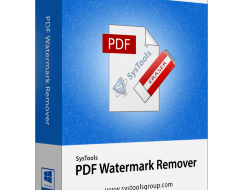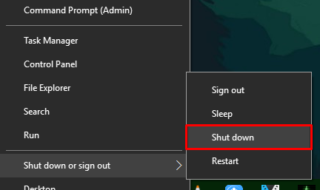Mobile app design is a key to building successful mobile apps that delights and meet end-user expectations.
Considering that there are more than 2.7 billion smartphone users from various walks of life and that 90% of the smartphone time is spent on apps, a half-baked or unprofessional approach to creating mobile applications will cost your business both money and time.
Additionally, Techjury found that users only use an average of 9 apps daily and 30 apps monthly.

But what happens to the other apps? They are either not beneficial to anyone or perhaps the quality is below standard.
To make sure that you cut through all necessary components in creating a successful mobile app, Hanna Schnaider shares key insights into the success of the mobile app design process.
Make sure you’ve completed this checklist next time you set out to design any mobile app for your business.
Contents
#1. Analysis and Planning
It’s important to first identify your target audience and then the strategy that comes in place, helping you to evolve your business idea into a successful app.
Next to this is your analysis and planning.
Although this may seem a bit laborious and somehow techy, I can’t stress enough how what you do at this stage will determine whether or not your app will be successful.
A business analysis that will be successful often begins with:
- Identifying or defining the target platform (iOS, Android, or both)
- Capturing detailed functional requirements and
- Choosing development method (native, hybrid, or cross-platform)
Identifying the target platform for your app is as important as the app itself as this gives you a chance to create a solution well-tailored to the needs of the people.
Before this phase, it’s quite important to identify your target audience based on location and preferences and know what they want exactly – their choice platform – or your solution will likely not resonate with them.
For instance, targeting an average U.S user with only an iOS version will certainly result in low conversion as most devices in the U.S are Apple or Android devices.
Statistics from Statista also show that 87% of smartphones globally are Android devices while the remaining 13% are Apple iOS devices.

Thus, if you’re planning on creating an app that will be used globally, it’s wise to use both platforms (iOS and Android) for a successful outcome.
Additionally, building apps for both platforms will require that your mobile development team include trained Android and iOS developers as these two platforms usually require different technology stacks.
After you have identified the target platform, you should have a clear understanding of your development approach. There are three major option to consider here:
Platform-Specific Native App
Native apps designs are coded and tailored to the platform’s original design – iOS or Android.
Majorly, the programming language is only supported by the operating system of the individual platform.
The development cost is quite expensive but this option elevates user experience as it leverages the device’s hardware and functionality to a very broad extent.
Cross-Platform Native App
This development approach incorporates Software Development Kit (SDK) but allows the app to run natively.
Common technologies used for this type of apps are Flutter and React Native.
Leveraging this option is cost-effective and you can save up to 30% of the budget you’d have used in implementing a native app.
Hybrid App
Implementing a hybrid app allows you to use one programming code for different platforms.
It’s basically compatible with all devices and operating systems and additionally cost-effective and fast to develop.
Developing a hybrid app will likely save you up to 50% of the original native app cost.
That said, defining the functional requirements is as important as every other thing during business analysis.
These requirements serve as the foundation, helping you to set up a detailed concept while also describing the project specification.
It’s recommended that you hire a business analyst at this stage to ensure every bit of necessities are being fulfilled.
#2. UX Design
After the business analysis, you already have a properly defined functional requirement and you’re set to move on to the development stage and this is where the UX expert comes into the scene to help you with your user experience design.
First off, they determine the data that the app will display to the users and how it will be displayed. Thus, they create imaginary profiles of your users (personas) and how they interact with the mobile application (scenarios).
Depending on the functional requirements, this process usually requires up to 7 personas with a minimum of 2 scenarios created for each persona.
The goal here is to ensure the app provides an excellent user experience, making sure the app is interactive, user-friendly, and intuitive.
This additionally allows the designer to create tailored wireframes to interaction flows between both the users and the app. The wireframes then go through a series of UX testing to ensure issues are eliminated while they are still at their weakest.
#3. UI Design Prototyping
The tailored wireframes created during the UX designing stage are the basis upon which the UI designers begin their development.
During this stage, they look into the company’s style guide (A document containing the company’s design standards including the color, font, and branding rules), combine its platform-specific guidelines, as well as the latest trends, and turn ordinary wireframes into hi-fi digital prototypes.
Here, they create mockups that display the app’s functionality using stationery designs and transform them into click-through prototypes with tools like Figma and Invision.
The prototypes are essential for simulating the UX and the app’s workflow that is expected from the finished product.
After the prototype is completed, the User Interface designers contact the company for reviews and suggestions.
It’s highly important to ensure you check out every part of the design and point out hidden flaws that may have negative effects on the app so you won’t have to spend extra money in the future.
Additionally, some of these errors may be quite difficult to fix, thus, it’s important to share all thoughts and doubts at this point. Once the prototype has been approved, it’s time to move on to the development phase.
Conclusion
The mobile app design process requires different segments and it’s usually an ongoing process that continues even after the app is launched.
Depending on the needs of the brand and its users, each project can breed more questions and requires specific decisions.
If you feel you still need additional thoughts or guidance about your mobile app development projects, feel free to reach out to our professional mobile design team at Fortyseven Software Professionals for consultation.



